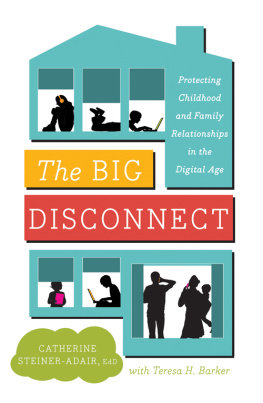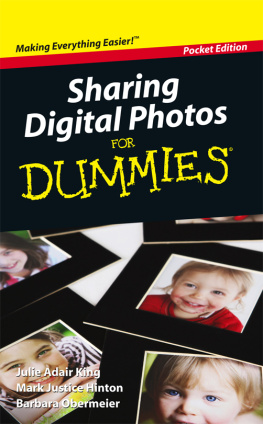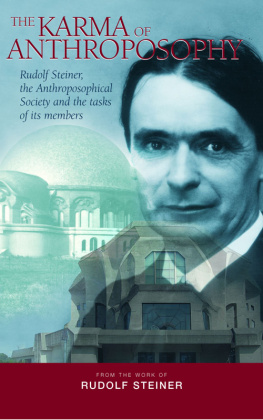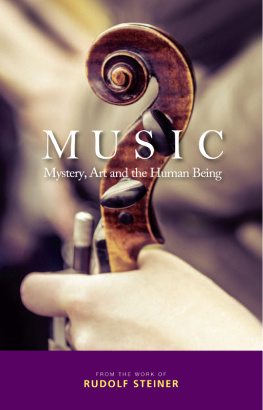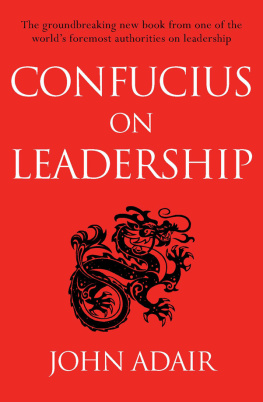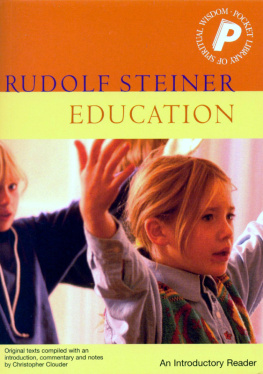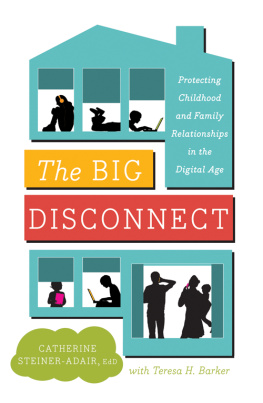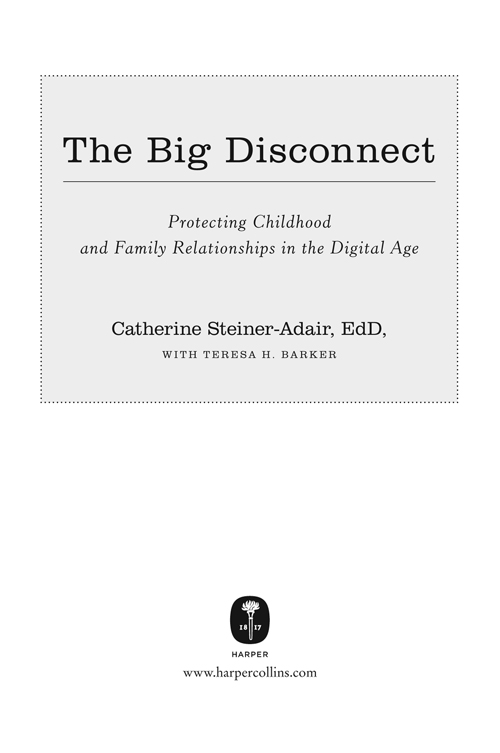
To Fred, Daniel, and Lily,
my beloved home page
Contents
All the wisdom in the world about child-rearing cannot, by itself, replace intimate human ties, family ties, as the center of human development... the point of departure for all sound psychological thinking.
SELMA FRAIBERG, THE MAGIC YEARS
A LARM TRAVELS FAST through the human brain. Awareness dawns more slowly. It is a cognitive process, a matter of comprehension that involves a different part of the thinking brain. Its how we connect the dots. Parenting has always included both. But parenting in the digital age challenges us in ways the human brainand heartcan hardly process fast enough. The dots rush past in a blur: flashes of insight with no time for reflection, downloads of details with too little time to both feel and respond thoughtfully. Once in a while a moment seems to hang for a fraction in timeOMG momentswhen we sense we are glimpsing a piece of some larger picture taking shape around ussomething importantbut its hard to tell exactly what. As a psychologist, a child and family therapist, a school consultant, and a mother of two, I see a lot of dots.
Sally, the mother of four school-age children, comes to a parent coffee Im facilitating. She is at her wits end and goes on to describe a domestic scene from the night before. She had been folding laundry while keeping an eye on her childrenages four, eight, eleven, and fifteenimmersed in their various activities in the adjoining family room. Their family room is off the laundry nook but not quite visible, so Sally was multitasking, folding clothes and checking her e-mail on her smartphone, as many of us do, alternately stepping in and out of the family room for a few moments at a time to keep an eye on the kids. Finally she needed a solid five minutes to search for socks without partners, and she asked the two older children to keep watch on their four-year-old brother. The fifteen-year-old was on her iPad, and the eleven- and eight-year-old brothers were playing a two-player racing game on the Wii. The four-year-old was romping around them as four-year-olds do. As usual, the older siblings nodded their agreement without looking up; Yes , they indicated, got it . So mom left them all together and took the laundry upstairs, tending a few e-mails while there. When she popped back into the room five minutes later everyone was precisely as they had beenexcept the four-year-old. He was putting the flourishes on a colorful wide-tipped purple Magic Marker trail that looped and snaked across the hardwood floor and beautiful wood cabinetry, weaving throughout the entire room. It was Harold and the Purple Crayon come to life.
When Sally saw this she went ballistic, she tells me. How could you let him do that?! she shrieked at her older children. And in that nanosecond before her children could even look up to see what she was talking about, she saw the answer to her question. All three of them were so transfixed in their screen activities that they hadnt noticed the four-year-old running wild, decorating the floor and walls. This might just as easily have occurred if theyd had the TV on or if theyd had their noses buried in a book, reading the afternoon away like generations before them. But in that instant Sally saw something more worrisome, felt something deeper and more ominous. First, she realized that when she had turned her attention to e-mail, however briefly, her intuitive third eyethe parental antennahad instantly lost its signal. Honestly, shed lost track of time, too; had it really been just five minutes or had it stretched beyond that? She had no idea; it was as if shed been lost in another world. And then there was the specter of her three older children, each lost in a mind meld with screens. I know this could have happened without the iPad or the Wii, she says, but I feel theres something about those screens that sucks my children away from me. Something that I dont think watching The Brady Bunch did to me and my siblings when we were growing up.
The other mothers nod in agreement. She is right. Our screens are sucking us inall of usin ways that shows like The Brady Bunch never did circa 1970. But it wasnt nostalgia for The Brady Bunch that made Sally wistful; it was remembering what it was like to be a kid and watch a TV show. You could love watching it but then you would leave the screen and get on with your real life: homework, outdoor play and after-school hours with friends, a solid dinner hour with your parents and siblings, and unhurried telephone conversations that arrived on your familys landline. Whoever answered the phone might ask Whos calling? and then yell the name out for all to hear as they called you to the phone. TV had its allurewe have a few generations of couch potatoes now to prove itbut it was essentially a passive activity, contained and time limited, and it was something a family often did together; not the stimulating, interactive, mesmerizing 24/7 experience we can access solo today through the media and technology.
Tech Is Our New Home Page
We live in the glow of the digital age and were hooked on techan ever-expanding array of electronic devices and capabilities designed to enable our every wish. Few of us would even consider trading our wired (or Wi-Fi) ways for the unplugged and bucolic Brady Bunch life. Weve adapted happily, for the most part, to the convenience and connectivity of the computer age. Our children, born into the digital culture, are natives; they speak the language, tech is their frame of reference, their mind-set. Kids between the ages of eight and eighteen, according to a 2010 Kaiser Family report, are spending more time on their electronic devices than any other activity besides (maybe) sleepingan average of more than seven and a half hours a day, seven days a week (i.e., every day ). Not only that, they typically multitask on computer, simultaneously instant messaging (IM), uploading YouTube videos, posting updates on Facebook, and continually searching the Web for fresh diversions. The so-called downtime they spend on computers is neurologically, psychologically, and often emotionally action packed. Stimulation, hyperconnectivity, and interactivity are, as the psychiatrist and creativity expert Gene Cohen put it, like chocolate to the brain. We crave it.
Designed to serve us, please us, inform us, entertain us, and connect us, over time our digital devices have finally come to define us. We step in and out of our various roles throughout the day as coworkers, family, and friends. But with our phones in our pockets, our laptops handy, and our panoramic screens, game systems, and online lives just a click away, for many of us our relationship with technology is our single most consistent domain. It is our digital backdrop and theme music. In any given moment, with a buzz or a ping, our devices summon us and we are likely to respond, allowing ourselves to be pulled away from our immediate surroundings and anyone in them, into the waiting world of elsewhere and others. Whether we use it for work, shopping, or socializing, for communicating with our children or their teachers, for wonderful reasons or sometimes for meaningless and addictive stuff, the effect is the same: We turn our attention away from those present.
We use the language of addiction to joke about our texting and online habits. We compulsively check our crackberry, lament not-really-joking that were addicted to e-mail, or complain that we need our YouTube or Facebook fix. We mean to step away from the screen and call it quits for the day, but we sit down for one last check of one last thingand then one more. We take our phones to bed. We take them to the bathroom. We dont leave home without them. I thought when my kids got to be a certain age Id stop feeling like I had to have it with me, but now I keep it with me anyway, says the mother of three children in their twenties. She has become a little self-conscious about her habit, she says, but when I start to leave it behind, its like a little voice inside says, better to keep it handy just in case you never know.

